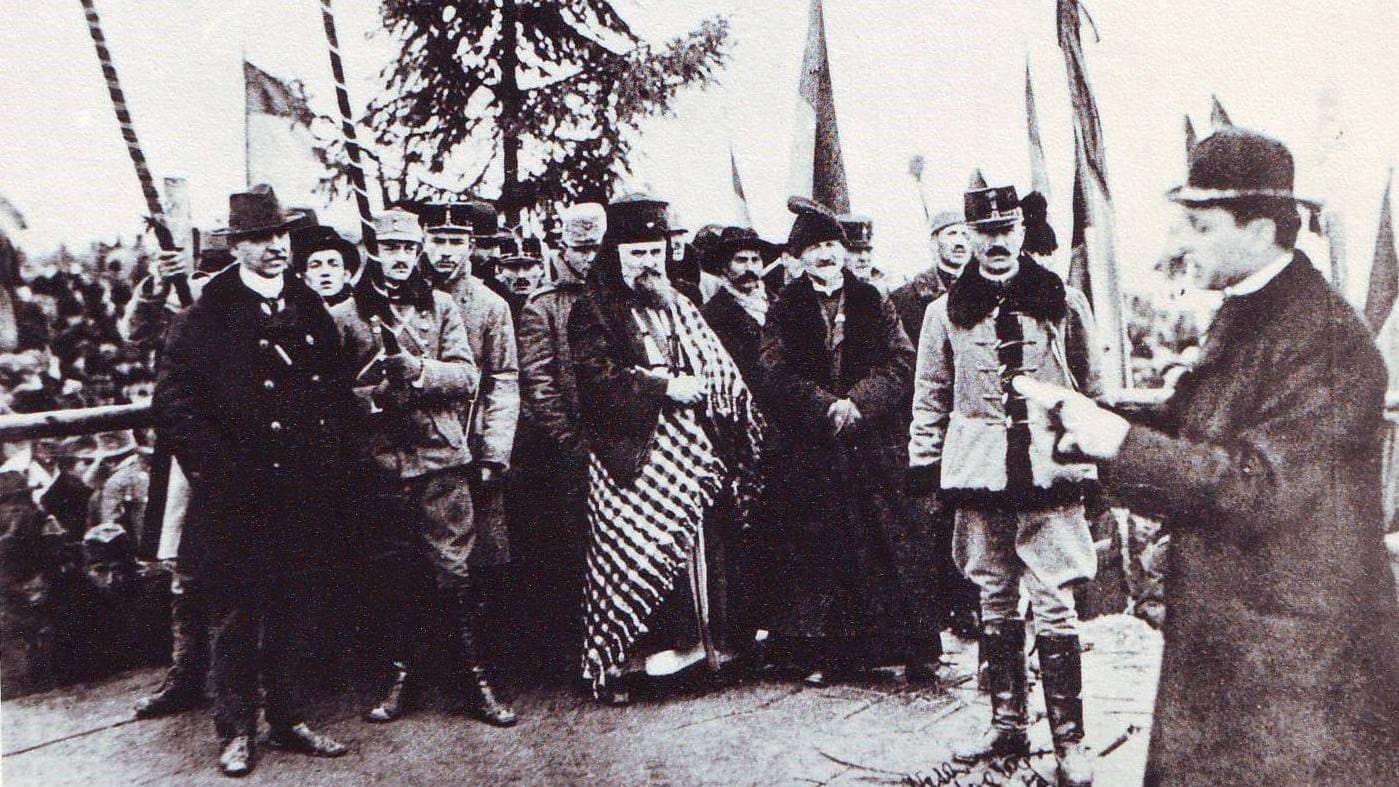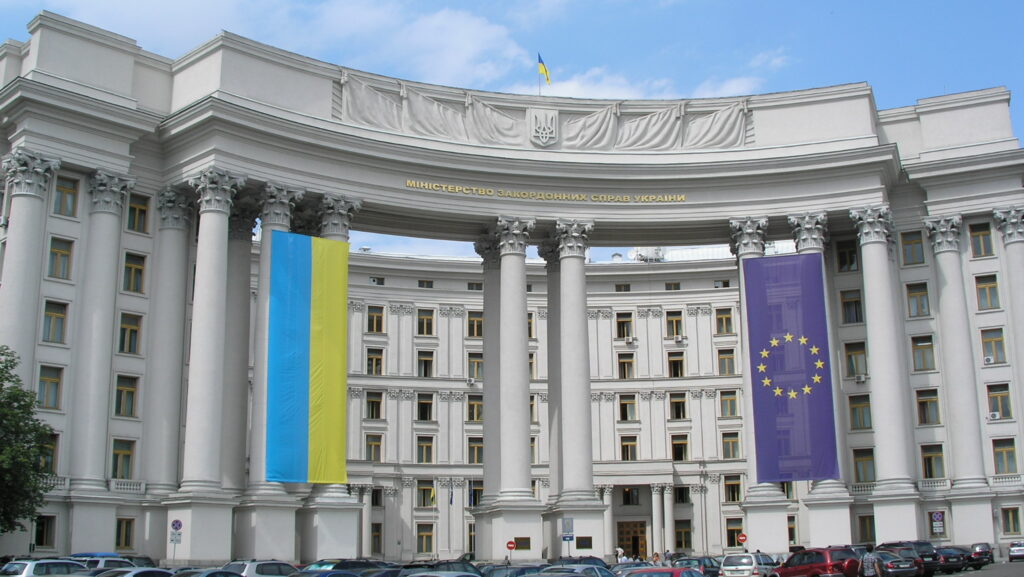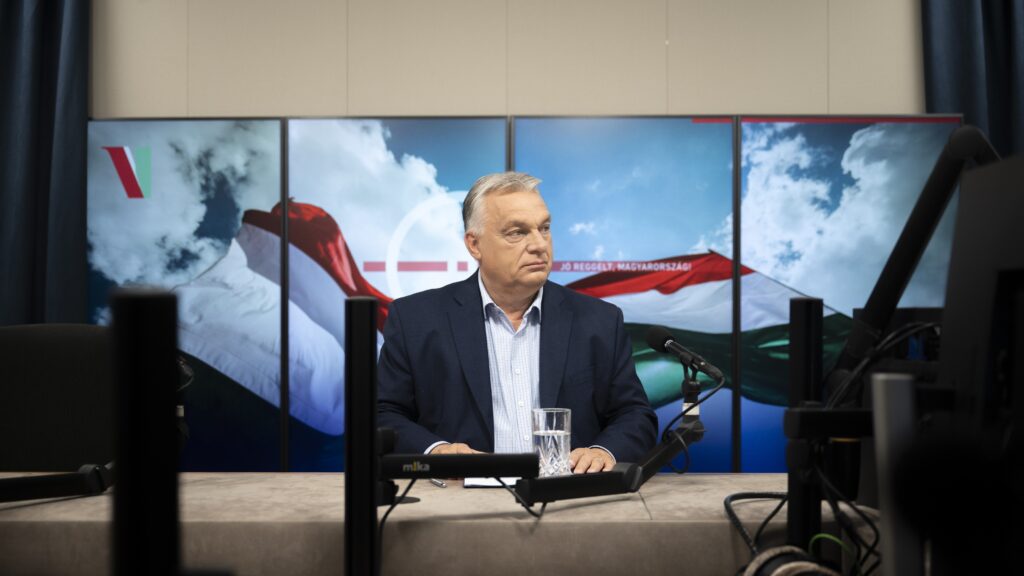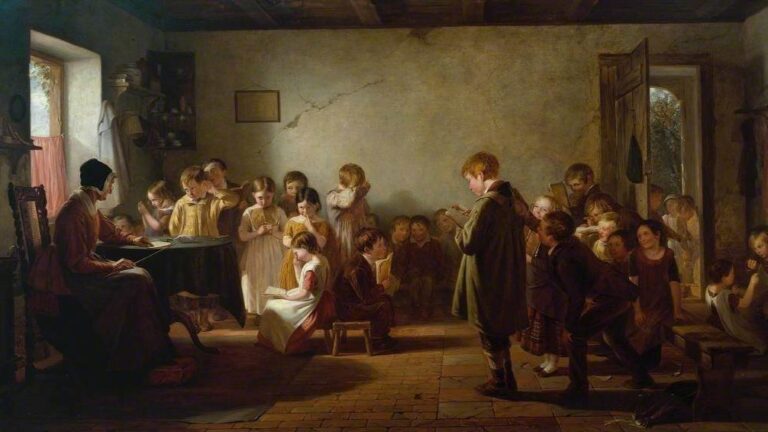Of the successor states of the former Austro–Hungarian Empire, Greater Romania was the one whose establishment was a special case—unlike Czechoslovakia and the State of the Slovenes, Croats, and Serbs, both born in 1918, the Kingdom of Romania existed even before World War I. The Kingdom of Romania, according to Romanian historiography, became ‘Greater Romania’ with the resolutions of a series of national assemblies, held Czernowitz, Chișinău, Gyulafehérvár (Alba Iulia), and Medgyes (Mediaș), declaring the accession of the formerly Hungarian territories. The date of the annexation of Transylvania was chosen as the national day of the new Romania, dubbed Great Union Day.
The Strengthening of the Secession Movement
After the National Council of Romania called the meeting of the General Congress of Bukovina, which voted in favour of accession to Romania on 28 November 1918, all the attention of the Romanians of Transylvania, Máramaros, Bánát, and Partium, looking to join the Old Romanian Kingdom, was focused on Gyulafehérvár. During the autumn of 1918, the Romanian national movement gained steam in Transylvania, emphasizing the Romanian people’s right to unite as one country. The executive committee of the Romanian National Party and the prominent Romanian Social Democrat politicians at the time decided to form the National Council of Romania in September–October of that year.
After that, the National Party’s meeting took place on 12 October 1918 in Nagyvárad (Oradea), where the gathered representatives assessed the state of the Austro–Hungarian Empire. Then, in accordance with their assessment, they decided to issue a declaration to the Romanian people and another one to the Emperor. A statement drafted by Vasile Goldiş was also accepted, which was meant to be read in front of the Hungarian National Assembly.
To achieve what was outlined in those documents, and to pursue further political action, the National Party created a task force, which consisted of six members. It was presided by Vasile Goldiş, while the rest of the members were Iuliu Maniu, Vaida-Voevod, Cicio-Pop, Vlad Aurel, and Ioan Suciu. Since three out of the six of them lived in Arad, they decided that the Committee would hold their sessions there, so they could act immediately if needed.
Romanian Assembly Representative Alexandru Vaida-Voevod read the declaration in front of the Hungarian parliament on 18 October 1918, on the exact day that the peace proposal by the Austro–Hungarian Empire was rejected by the Entente; while Count István Tisza informed House members that the monarchy was defeated.
Voevod’s speech was ‘a harsh indictment’ of the Monarchy’s policies suppressing national minorities and the Tisza administration’s measures of ‘drastic Hungarianization’. He stated that the Romanian National Party wished to exercise its national right to self-determination, and thus
they did not recognize the Hungarian State and parliament’s authority to decide on the fate of ‘the Romanian nation’ living in Hungary,
which can only be done by a Romanian National Assembly to be convened. He also declared that a Transylvanian Romanian delegate would be sent to the peace negotiations to represent the interests of Romanians living in Hungary; then went on to state that only the executive committee of the Romanian National Party could negotiate and decide on their fate, and agreement negotiated by any other entity would be viewed as null and void.
While reading the declaration, the Romanian representative was warned twice that what he was saying went against the Constitution of Hungary. This speech triggered a strong international response. This is how Romanian politician Ion Gheorghe Duca recalled these events:
‘The news of Vaida-Voevod’s speech in front of the Budapest parliament had reached us as well, it was a sign of the liberation of our Transylvanian brothers. When Brătianu read the speech aloud to us at the Jászvásár (Iași) conference, we all cried tears of joy and got very emotional.’
The Paris-based newspaper La Roumanie pointed out the following: ‘Romanians are not a nationality anymore; they are a nation. The Austro-Hungarian Empire is a thing of the past, the time of the Compromise has passed. Nations have the right to act on their own, this is an internationally recognized fact, as well as a question of integrity and humanitarianism’.
31 October 1918 can also be considered a major historical event, when the delegates of the Romanian parties gathered at the Vadászkürt Hotel in Budapest and established the Romanian National Council on a parity basis.
Six Civic Party and six Social Democratic Party politicians were included. From the Social Democrats, Ion Flueraş, Iosif Jumanca, Enea Grapini, Basiliu Surdu, Tiron Albani, and Iosif Renoi became members; while the National Party delegated Teodor Mihali, Vasile Goldiş, Alexandru Vaida-Voevod, Ştefan Cicio-Pop, Aurel Vlad, and Aurel Lazăr to the new Council. Ştefan Cicio-Pop was elected President of the Council, while the duties of the Director-General were performed by Gheorghe Crişan.
In accordance with the arrangement made in October, the Council chose the city of Arad as its seat. The Romanian National Council was trying to convince all that it was the only entity to represent the interests of the Romanians of Transylvania, the Bánát, Máramaros, and Partium. The leaders of the Orthodox Church of Romania and the Greek Catholic Church of Romania were referring to Cicio-Pop and his associates as ‘the interim government of the Romanian people’ and the ‘supreme authority of the Romanian people’ in public statements. The clergy was called upon to take an oath of loyalty.
The First Steps of the Romanian National Council
The Romanian National Central Council was fully aware that the first milestone of unification would be normalizing relations with the Hungarian National Council and the Budapest government. Thus, they issued an ultimatum to the Hungarian government, which stated:
‘The rapid development of events led us to our conviction that, following our right to self-determination, and in the interest of our nation and of the minorities living with us, for the sake of preserving public safety, and the protection of persons and private property, we must take over the full governing authority in parts of Hungary and Transylvania that are populated by Romanians. These areas include the following counties: Torontál, Temes (Timiș), Krassó-Szörény (Caraș-Severin), Arad, Bihar (Bihor), Szatmár (Satu Mare), Máramaros (Maramureș), Beszterce-Naszód (Bistrița-Năsăud), Szolnok-Doboka, Szilágy, Kolozs, Maros-Torda, Torda-Aranyos, Alsó-Fehér, Kisküköllő, Nagyküköllő, Hunyad, Szeben (Sibiu), Brassó (Brașov), Fogaras (Făgăraș), Háromszék, Udvarhely (Odorheiu Secuiesc), and Csík (Ciuc); as well as the parts of Békés, Csanád, and Ugocsa counties populated by Romanians.’
They also demanded the establishment of mixed committees to facilitate the transfer of power and declared that they would create a Transylvanian–Romanian government based in Nagyszeben. The deadline for the reply to the ultimatum was set to 12 November. The Romanian leadership did not view their ultimatum as a compromise, but rather, as a step in severing ties with Hungary. This was backed up by an article published in the local paper Românul, which said that the national assembly in the making would have the right to decide the fate of the Romanian nation, and
the time had come to create a unified Romanian nation state, in other words, ‘now or never!’.
Negotiations between the Hungarian National Council, the Hungarian government, and the Romanian National Central Council took place between 13 and 15 November in Arad. The reply to the ultimatum by the Hungarians was delivered by Oszkár Jászi, the leader of the delegation; the response—according to the Romanians—was a proposal that made virtually no efforts to meet the demands outlined in the ultimatum. The Hungarian proposal suggested that Transylvania would gain autonomy as part of Hungary, led by a Romanian government.
Also, the Hungarian government would have yielded leadership to the Romanian National Council ‘only’ in counties where the majority of the local population was Romanian. As for Transylvania, they were thinking of creating a Swiss-style system of cantons until the peace treaty that ended the war was finalized. For the Romanian, the fact that the state of Hungary was attempting to maintain its unity meant that the negotiations could not be successful.
The Organizing of the Assembly of Gyulafehérvár
The Arad negotiations and the ‘solution’ offered by the Hungarian delegation further encouraged the Romanian leaders to convene a national assembly. The request by a group of young people to call an assembly of the Romanian National Council prompted Goldiş to start thinking about the venue. Three possible cities came to mind. Balázsfalva (Blaj), which had been the site of the Romanian demonstration in 1848, Nagyszeben, as a religious and cultural centre, and Gyulafehérvár, the city of the first ‘great unifier’, Viceroy Mihály.
In the meantime, contacts with Romanian politicians in the Romanian Old Kingdom have been made, and meetings became more frequent during November. As a representative of Alexandru Vaida-Voevod and Teodor Mihali, Lieutenant Popovici, lawyer Boeriu, and Laurenţiu Oanea arrived in Jászvásár, who met with several leading politicians, reporting on events and the situation in Transylvania. The delegates stressed the importance of realizing the union between Transylvania and Romania. Oaneanak Brătianu handed over a letter dated 14 November, which he had to deliver to the members of the Romanian National Central Council. This letter stated that it was important to convene a national assembly in Transylvania, where the participating Romanians would proclaim the unconditional unification with the Kingdom of Romania. However, Brătianu’s letter also raised some issues regarding the organization of the National Assembly.
On 16 November, another delegation—Professor Nicoale Bălan and Captain Victor Precup—arrived in Jászvásár. This delegation was received by General C. Coandă (President of the Council of Ministers), and General Presan, but they also met with Ion I. C. Brătianu and Nicoale Iorga. The Romanian politicians wrote a letter to Vasile Goldiş summarizing the essential elements of the discussions held in Jászvásár and informed him how they saw the situation and what steps they proposed to Romanians in Transylvania.
Romanian politicians advised the Romanian National Central Council to break all ties with the Hungarian Government
and convene the National Assembly as soon as possible. The most suitable venue for this was found to be the city of Gyulafehervár. They also drew the attention of their Transylvanian brothers and sisters to the importance of the largest possible participation, and that the participants should be representatives of the local councils, if possible. They also informed that thanks to the intervention of Saint-Aulaire, both the British and the Americans were now aware that the Romanian Transylvanian’s desire to unite with the Kingdom of Romania was unchangeable and that there was no particular objection to this. The letter stressed that any referendum would be redundant—the announcement of unification is eagerly awaited by the Romanian public and by Romanian politicians in Jászvásár. There was also one, Sextil Puşcariu, who suggested that the Romanians in Transylvania should announce the unification on the same day as it happened in Bukovina because that way the Paris Peace Conference could consider it as the same referendum which would seriously influence its decision.
After the unsuccessful negotiations with the Hungarian delegation, the Romanian National Central Council tried to keep in touch with the Romanian politicians in Jászvásár. George Crişan and Toader Roxin left Arad on 16 November and met Valeriu Branişte in Lugos, who was tasked with contacting and negotiating with General Franchet d’Espérey on how to bring Romanian units that had been in the Monarchy at the end of the war to Transylvania. From there Crişan and Roxin travelled beyond the Carpathians. They went first to Craiova and then to Bucharest, but also visited Jászvásár and Chernivtsi, from where they returned to Gyulafehérvár with Pan Halippa.
Meanwhile, the Romanian National Central Council began to organize the National Assembly. It drafted the necessary rules for the election of the participating delegates, while on 18 November Vasile Goldiş drafted a manifesto addressed to the peoples of the world, in which he was much clearer than before about the secessionist aspirations. (Fodor 2018, 16.) The manifesto was also translated from Romanian into French and English. After describing the ‘oppressive’ policy of the Hungarians towards the Romanians and the rejectionist attitude of the Budapest government, the manifesto made public the ‘general will’ of the Romanians in Transylvania: they did not wish to live under the ‘oppression’ of others in ‘their own ancestral land’—they wanted an ‘independent and autonomous’ country, in which freedom would be guaranteed to other peoples as well.
Two days after the publication of the manifesto, on 20 November, the call for a National Assembly to be held in Gyulafehérvár (the ‘historic city of the Romanian nation’) on 1 December was published, beginning with the words ‘History calls us to action’. The 21 November issue of the newspaper Românul, which had a circulation of 21,000 copies, also contained the text of the call. On the same day, Orthodox Church leaders Ioan I. Papp, Miron Cristea, and Greek Catholic Church leaders Demetriu Radu, Valeriu Traian Frenţiu, and Iuliu Hossu once again expressed their ‘conviction’ that self-determination is in the Romanian national interest and that the Romanian National Central Council is the only political formation that can represent the Romanian people in Hungary and Transylvania.
Oszkár Jászi assured Iuliu Maniu, who was in Budapest at the end of November, that—as he put it, in order to avoid bloodshed—the Hungarian Government would not prevent them from holding the planned assembly, and that, as a matter of fact, the Hungarian State Railways (MÁV) had provided special trains for those who wanted to attend the event in Gyulafehervár.
At the same time, the election of the Romanian delegates also began. Some of the 1,228 delegates were elected by open ballot (in accordance with the traditional Transylvanian constituencies and the Monarchy’s rules), which in some places became a kind of folk festival among the Romanians. On learning of all this, it is no coincidence that the national-liberal newspaper Mişcarea already informed its readers of the preparations as a ‘foregone conclusion’.
In addition to the 1,228 delegates, Romanians from Transylvania, Banat, Maramureş, and other regions of Hungary also came to Gyulafehérvár, whose number exceeded 50,000—some arrived by train, some by carriage, many on foot. As Romanian writer Lucian Blaga put it: ‘On one side of the road, the wagons of the Romanians were moving towards the city, their wheels squealing in the snowy ruts, each one of them resounding with a whine and filled with elation, while on the other side, in the same direction, the German army from Romania was retreating.’
Events in the National Assembly
Although the Assembly was announced for 1 December, the debate on the accession with prominent representatives of the Romanian National Central Council already started on 30 November. At the debate, chaired by Ştefan Cicio-Pop, the Social Democrats present, including Ion Flueraş, argued in favour of autonomy for Transylvania within Greater Romania, while the majority of Nationalists and representatives of expatriates argued against autonomy and in favour of unconditional accession.
The sometimes heated debate was dominated by the opinion of Alexandru Vaida-Voevod, who argued that a majority of Transylvanian, Bukovina, and Bessarabia Romanians over the Romanians of the Old Romanian Kingdom was in itself a guarantee of more democratic system. Iuliu Maniu stressed that attaching any conditions to the accession would damage Romania’s reputation. The debate, which dragged on into the night, ended in a compromise, which was essentially reflected in the text of the manifesto presented the following day. Not explicitly as a condition, but nevertheless included in the draft resolution—which was unanimously adopted—was the plan for ‘provisional autonomy’ until the Constituent Assembly met. On the morning of 1 December, Te Deum was sung in both Romanian churches in Gyulafehérvár and a meeting took place in the casino building. Halippa was present for Bessarabia, and Cazacliu and Procopovici for Bukovina. In his opening speech, Cicio-Pop highlighted the historical significance of the meeting and the moment, followed by the President of the newly formed Assembly, Gheorghe Pop de Băşeşti. Vasile Goldiş also gave a ceremonial speech, emphasizing that
only when Transylvania is united with Romania can Romanians in Transylvania become free.
He declared that after the unification with Romania, all citizens living on ‘Romanian soil’ would enjoy the same rights as the state-creating nation. Then, in the second half of his speech, he presented the points of the resolution.
The National Assembly paid tribute to the Romanian ‘heroes’ who ‘gave their blood in the war for the Romanian cause, died for freedom and the unification of the Romanian nation’. It also expressed its admiration for the Entente, which ‘saved civilization from the clutches of barbarism’. In his speech, Iuliu Maniu called on the National Assembly to adopt the resolution that would create a united Romania forever and that would ‘bring true democracy and social justice’. Iosif Jumanca declared that Romanian Social Democrats also agree with the unification because workers have always been in favour of national unity.
Following the speeches, Gheorghe Pop de Băşeşti proposed the adoption of the resolution, too, which was unanimously approved by those present. On a proposal by Alexandru Vaida-Voevod, the National Assembly adopted the idea of creating a Grand National Council of 200 members, with legislative powers. In front of a crowd of tens of thousands (more than 50,000 according to the most recent Romanian historiography) gathered in Horea, the delegates solemnly read aloud the text of the manifestos, which was received with ‘indescribable enthusiasm’ by the audience.
The crowd chanted together: ‘Long live Romanian unification! Long live our King Ferdinand! Long live Queen Mary!’. (Dăncuș–Todinca 1998, 57.) Lofty words were spoken by Miron Cristea, Iuliu Hossu, Aurel Vlad, Aurel Lazăr, and Silviu Dragomir, pointing out the greatness and importance of the moment and the tasks ahead. Lucian Blaga wrote about the event as follows:
‘In Gyulafehérvár, there was no room for me in the casino hall. But it had an advantage. I could walk back and forth all day long and be present in the field where the people were gathered. It was an incredible place. Here and there were podiums from which to address the assembled people. There, that day, I got to see spontaneous, incredibly disciplined, and strong national enthusiasm. The peculiarity of the situation allowed one to overlook the mistakes of the inexperienced speakers on the rostrums.’
Although the unification fulfilled the Romanians’ wish, the Hungarians’ aspirations for self-determination in Transylvania were ignored.
The annexation of Transylvania to Romania was finally enshrined by the Treaty of Paris.
REFERENCES
Artúr Köő, ‘Erdély, Bánság, Partium és a Máramaros vidék csatlakozása Nagy-Romániához: Gyulafehérvár, 1918. december 1’, in Gulyás László (ed.), Fejezetek a versaillesi Közép-Európa történetéből, Vol. 1, ‘Az utódállamok születése 1918–1919’, Virtuális Intézet Közép-Európa Kutatására, Szeged, 2021, pp. 29–48.
Artúr Köő, ‘Utolsó esély. A Lex Apponyi a Tisza István- féle magyar-román közeledési kísérlet tükrében’, im Hitel, Vol. 33, No. 1, 2020, pp. 79–107.
Béni L. Balogh (ed.), Románia és az erdélyi kérdés 1918–1920-ban. Dokumentumok, Bölcsészettudományi Kutatóközpont Történettudományi Intézet, Budapest, 2020, p. 26.
Ernő Raffay, A magyarországi Román Nemzeti Párt az első világháború végén, Tiszatáj, Vol. 36, No. 6, 1982, pp. 49–50.
Ernő Raffay, Erdély 1918–1919-ben, Kárpátia Stúdió, Köröstárkány–Kápolnásnyék, 2019, p. 82.
Gergely Kunt, Béni L. Balogh, and Anikó Schmidt (eds.), Trianon arcai. Naplók, visszaemlékezések, levelek, Libri – National Archives of Hungary, Budapest, 2018, pp. 294–300.
Gheorghe Sora, Vasile Goldiş – militant pentru desăvîrşirea idealului national 1 decembrie 1918, Editura FALCA, Timişoara, 1980, pp. 210–211.
Ignác Romsics, Erdély elvesztése 1918–1947, Helikon, Budapest, 2018, p. 60.
Ion Agrigoroaiei, ‘Marea Unire’, in Gheorghe Platon (ed.), Istoria Românilor, Vol. 7, ‘Tom II. De la independenţă la Marea Unire (1878–1918)’, Editura Enciclopedică, Bucureşti, 2003, pp. 507–523.
János Fodor, ’Magyar nemzetiségpolitikai kísérletek és a román álláspont 1918 őszén’, in Korunk, Vol. 29, No. 12, 2018, p. 16.
‘La Alba Iulia’, in Mişcarea, Vol. 10, No. 245, 15 November 1918.
Mihai Dăncuș and Gheorghe Todinca, Maramureșul și Marea Unire. Crestomație de texte și documente 1918–1919, Muzeul Maramureșului și Asociațiunea pentru cultura poporului român din Maramureș, Sighetu Marmației, 1998, p. 57.
National Archives of Hungary, K 40 1918-IX-240.
Ştefan Pascu, Făurirea statului naţional român II, Editura Academiei, Bucureşti, 1983, pp. 88–92.
ONLINE SOURCES
http://romanialacentenar.ro/hu/unirea-bucovinei-cu-romania/, accessed 24 January 2020.
http://www.romania-actualitati.ro/victor_precup_profilul_unei_ascensiuni-119055, accessed 11 November 2022.
Related articles:








